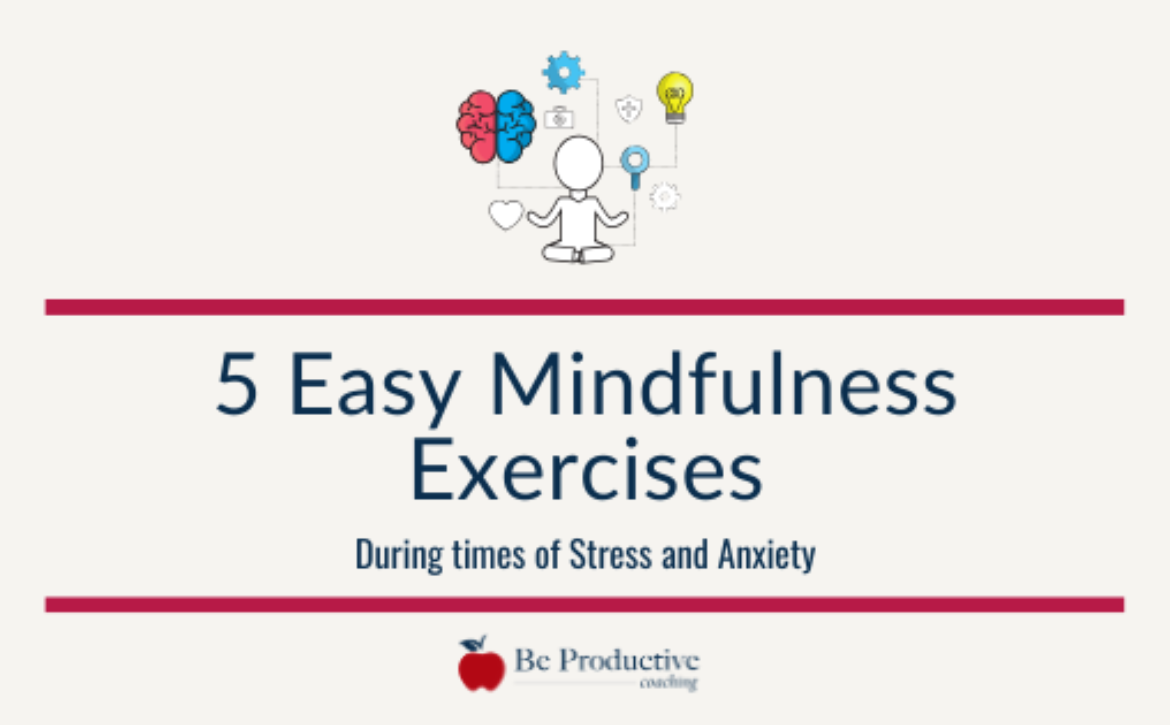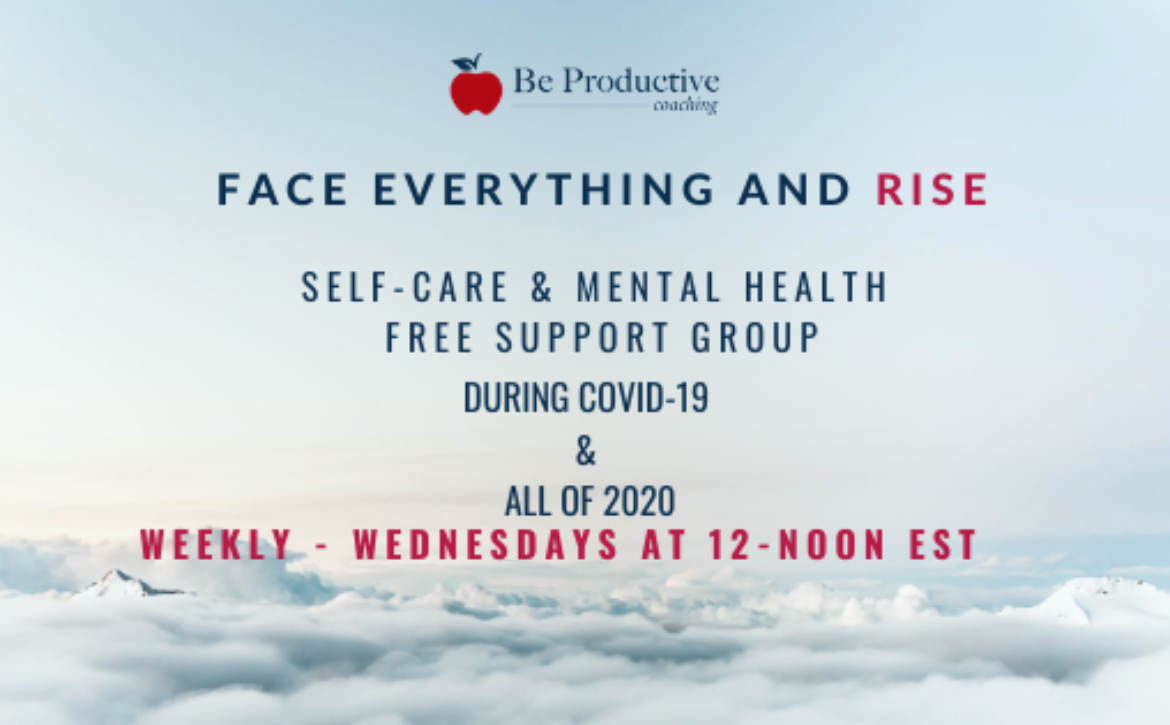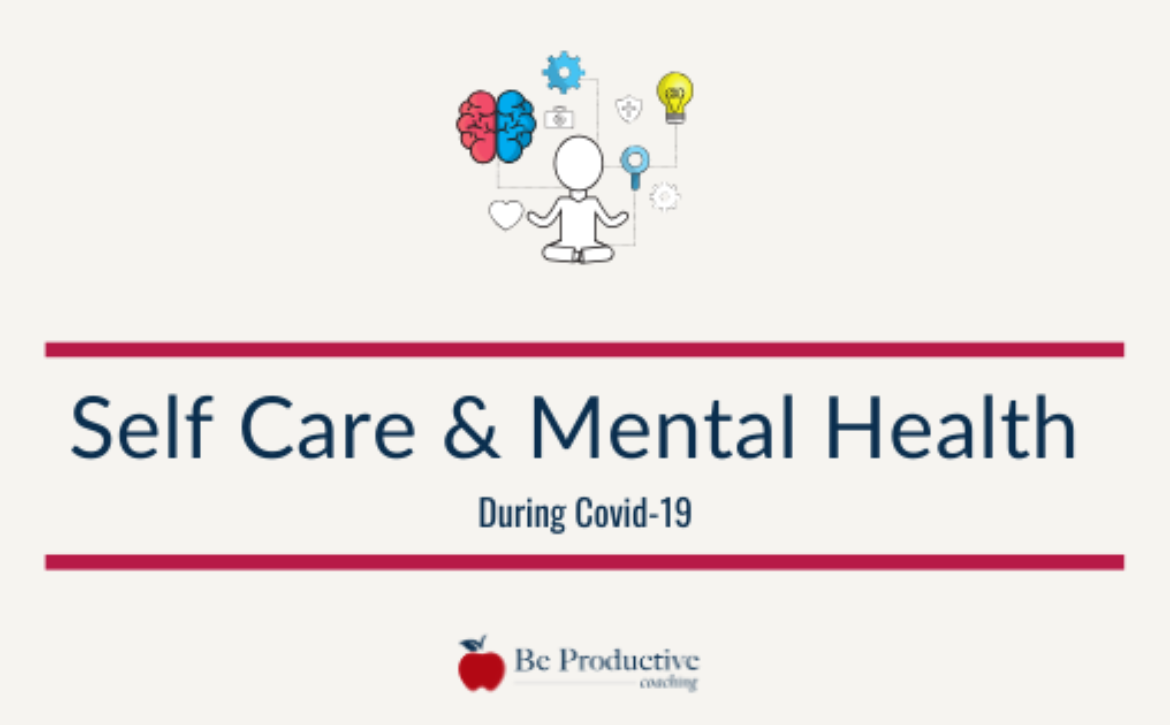5 Easy Mindfulness Exercises
I overheard a recent interview on one of the new’s channels as my husband was watching his daily COVID-19 update, and this time they had John Whyte the Chief Medical Officer, of WebMD, who was explaining that the most typed search on their website right now is for anxiety and depression symptoms. This didn’t surprise me knowing that many of us are experiencing high-stress levels and anxiety during this time of pandemic as we face COVID-19 and the global financial crisis. I was happy to see that this was finally a discussion on the news channels.
I’ve always had an interest in mental health, I even wanted to major in psychology before getting caught up in my hospitality career. Then throughout the years, I’ve dealt first hand with the anxiety and depression of different family members including my mom, grandmother, and husband. As a coach, I’ve helped many of my clients incorporate practices to help avoid the onset of stress and anxiety from their careers. It was due to this interest that I decided to start my Face Everything & Rise, free weekly mental health support group during COVID-19.
One of the practices I incorporate is mindfulness. I happen to love mindfulness and have had my own practice for over 8 years. In this new post, I’d like to share with you 5 of my favorite mindfulness exercises. Before I do, in case you are not familiar with what mindfulness is, I’ll bring you up to speed quickly.
Lets first look at the definition of mindfulness according to the dictionary:
mind·ful·ness
/ˈmīn(d)f(ə)lnəs/
noun
1.
the quality or state of being conscious or aware of something.
“their mindfulness of the wider cinematic tradition”
2.
a mental state achieved by focusing one’s awareness on the present moment, while calmly acknowledging and accepting one’s feelings, thoughts, and bodily sensations, used as a therapeutic technique.
Next lets look at the overall benefits of mindfulness?
- Improves overall health
- Improves Cognition
- Improves Performance
- Brings Joy
- Helps us sleep better
- Improves self-esteem
Here are some ways that we can practice mindfulness:
- Staying in the NOW
- Meditating
- Eating mindfully
- Observing our breathing
- Connecting to our senses
- Listening to the sounds around us
- Starting a gratitude practice
Here are the five simple mindfulness exercises that you can incorporate to help reduce stress and anxiety:
1) Color Walk (one of my favorites)
If you have a dog then you can practice this during your dog walks otherwise if you do not just simply go for a ten-minute walk by yourself. Pick a color that comes to your mind. During your walk, you will look for all the things that you can see in that color. Don’t focus on things, just focus on the color. You will be amazed at the things you see. At the end of your walk, think back about all the new things you saw.
Example:
Pick the color red. Notice the red flowers, a red car driving by, your neighbor’s red door, etc. Pick a different color each time.
Start in your block then go to new surroundings. You can also do this by walking around your home.
2) STOP: Take a Mindfulness Pause
When you notice that you are feeling overwhelmed, take a pause. Next follow these basic mindfulness practice instructions that will support re-engagement of your prefrontal cortex (our “logic center”) enabling you better access to your inner wisdom, awareness, and creative thinking.
- Start by noticing or experiencing what is happening within your body at that moment.
- Next, just sit with (allow) yourself to feel these sensations and breathe.
- Whenever your mind wanders into the negative or overwhelming thoughts, simply return to noticing your body sensations.
- After about 30 seconds notice if you feel a change in your sensations. What are you experiencing now?
- Breathe into this new sensation and just notice your breath as it is.
- This Mindfulness Pause takes less than two minutes, yet quickly creates a calmer space. Once in this calmer space, ask yourself what it is that you want to focus on that would have the greatest positive impact in the situation (or in the context of your bigger goals) and continue about your day.
3) Meet Each Day with the Best of Who You Are
This exercise has a small piece of pre-work, and is then followed by a mindfulness exercise to “meet each day with the best of who you are”. You can use this mindfulness practice daily or whenever you want to intentionally create your day.
Pre-work: Start by writing down what an ideal day might look like for you. Then explore what factors get in your way of creating your ideal day, and what would help you create it.
Here’s the Mindfulness Exercise to Meet Each Day with the Best of Who You Are:
- Tune into the sensation of your feet on the floor (for about 30 seconds).
- Next tune into the sensation of your breath (for about 30 seconds).
- Then answer these 3 questions:
- “What matters most to you today?”
- “What would you like to let go of today?” (What isn’t serving you?)
- “Who do you choose to be today?” (How will you express your values?)
- Finally, to wrap-up, this exercise, return awareness to your breath as you invite yourself into this intention for your day (for at least 30 seconds).
4) FEEL Your Breathing for 20 Counts
This is a quick tool we coaches use with clients – and clients can use for themselves – when the stress and anxiety are extreme. You can use this easy exercise when you are feeling overwhelmed, stressed about a difficult decision, prior to meetings or difficult conversations, or following stressful incidents from which you need to cool down. Here’s how:
- Start by sitting in a comfortable position, placing your feet on the floor.
- Next, place one hand on your abdomen and then to place one hand over your heart.
- Now simply breathe – without any need to control the breath – just breathe.
- Count the out-breaths from 1 up to 20.
- Notice when your thoughts distract you (without self-judgment or criticism), and then return your attention to your breathing.
- Why this works: Feeling your chest and abdomen rise and fall under your hands signals to your brain that the threat is over, and instantly stimulates the parasympathetic nervous system (the “rest and digest” part of our nervous system) which then switches off the threat response activation to bring a sense of calm.
5) Simple Breathing Exercise
This is another quick breathing exercise that is easy and you can do it anywhere.
- Start by sitting in a comfortable position, placing your feet on the floor with your back straight, shoulders down and chest up.
- Next, place both hands on your thighs facing up or down whatever feels normal for you.
- Now take 3 regular deep breaths – without any need to control the breath – just breathe.
- Next, take a deep breath in counting the breath in from 1 up to 5 or 10.
- Hold the breath for a count of 5 to 10 (same count as your deep breath in).
- Breath out counting the out-breaths from 1 up to 5 or 10 (always use the same number you used to take your deep breath in).
- Repeat this 3 times and then notice how you feel. You should feel much better. If you don’t then repeat this breathwork 3 more times.
I hope these exercises are helpful to you. If you decide to start your mindfulness practice please email me and let me know how it’s going. I’d love to hear from you!




